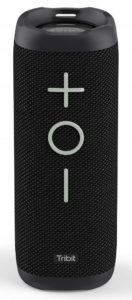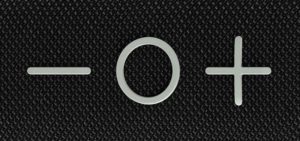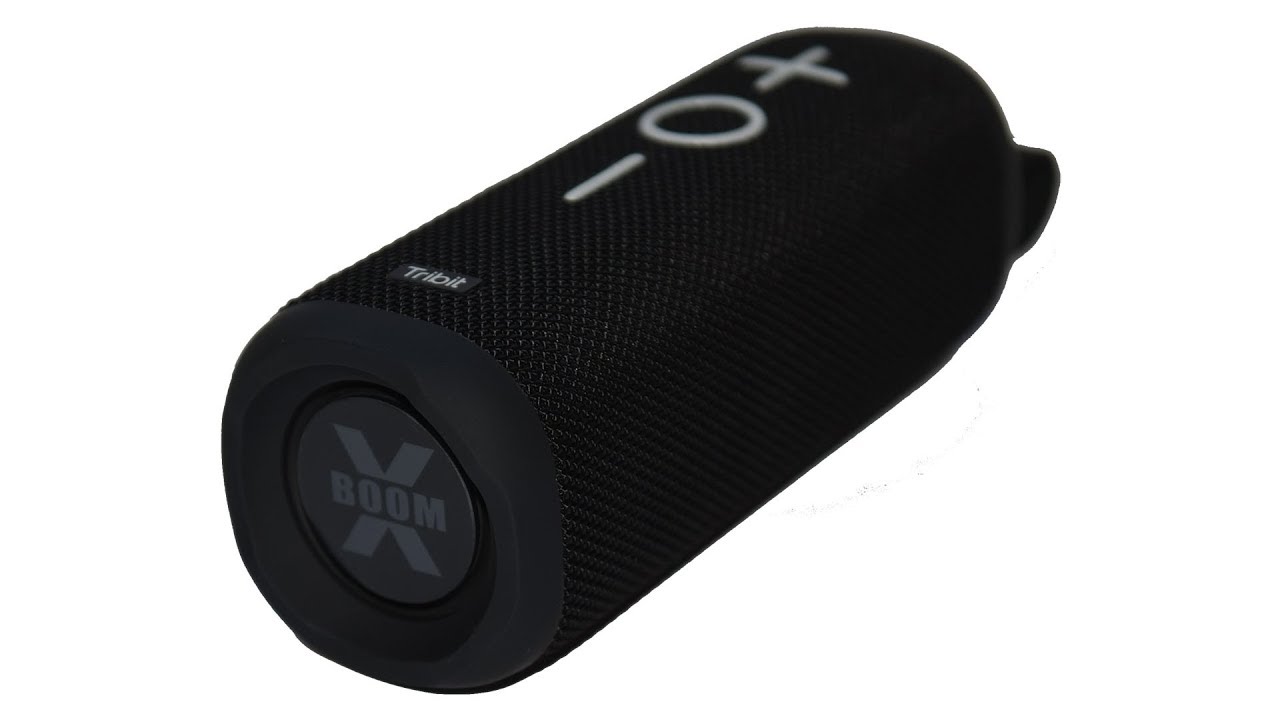Tribit X-Boom (StormBox) Bluetooth Speaker Review
Pros
Cons
Rating

Introduction
Here at The Tech Buyer’s Guru, we’ve had the chance to test quite a few Bluetooth audio products over the years, and it seems to us that Bluetooth is finally coming of age. Sure, Bluetooth audio has been a “thing” for a while, but even a few years back, we found that expensive, high-end Bluetooth audio devices suffered from significant distortion and static. Luckily, Bluetooth keeps evolving, and even better, the technology keeps getting cheaper (which isn’t something you can say about smartphones these days, can you?!?).
In early 2018, we tested a couple of products from iClever’s new Tribit sub-brand, the Tribit XFree Tune Bluetooth Headphones and XSound Go Bluetooth Speaker, and we were very impressed. The Tribit name and industrial design were introduced to appeal to a more tech-savvy audience, and so far, we think iClever’s gamble is paying off. We also think it was probably a necessary step in order to keep pace with the competitive (and crowded) Bluetooth audio market.
With that said, Tribit has recently introduced its most premium product ever, made to go head-to-head against high-end speakers such as the Ultimate Ears Boom 3. Well, they say imitation is the sincerest form of flattery, and what we have here today, the Tribit X-Boom, is clearly Tribit doing its best to imitate the Boom in just about every way. It looks nearly identical, uses similar marketing slogans (including a 360-degree surround claim we’ll discuss later), and even has a similar name (update: Ultimate Ears apparently made a legal stink about this, as the X-Boom was renamed the “StormBox in September 2019!). But keeping true to Tribit’s value-oriented approach, the X-Boom scraps one page from its competitor’s book, and that is the price. The X-Boom comes in at less than half the cost ($70 selling price versus $150). That makes it a huge bargain, but still a clear step up in product class from the $30 Tribit XSound Go that we previously reviewed.
So, does the X-Boom just walk the walk, or can it talk the talk? Read on to find out!
We’d like to extend a special thank you to Tribit for providing us a review sample of the Tribit X-Boom Bluetooth Speaker.
Description and Features
Measuring about 7.25″ tall and 2.75″ wide and deep, the X-Boom is relatively portable, around the size of a small water bottle. Curiously, it’s just 40% larger than Tribit’s XSound Go, the aforementioned $30 wonder-speaker that Tribit released earlier this year. That immediately had us wondering if it would sound a whole lot better, since they are in the same general size class. We’ll get to performance on the next page, but to be sure, the X-Boom is a more powerful speaker. Part of that is evident in the heft: 527 grams (or 1.16 lbs.) on our scale, heavy enough that you won’t want to actually carry it around like you would a water bottle, despite the similar dimensions.

The X-Boom is quite stylish, not too surprising given that it copies nearly all of its design elements from the popular Ultimate Ears Boom speaker lineup. Perhaps to Tribit’s chagrin, however, it looks more like the outgoing Boom 2 than the brand-new Boom 3, released a week or so after the Tribit X-Boom. That’s going to come with the territory when you have your sights set on the market leader’s current product, rather than its next-gen product! While this may be a bit of a cruel lesson for young Tribit, the good news is that it still looks really good. Ironically, the most notable design element pulled straight from the Boom models is one that doesn’t work particularly well in Tribit’s case: the + and – buttons. These buttons are shaped just like the symbols, meaning they are awkward to press. The minus is particularly hard to operate, as you’re essentially pushing down on a thin, recessed button, which just doesn’t feel great. Interestingly, Tribit adds an “O” button, for lack of a better name, that acts as a play/pause button, and unlike the + and -, the button is in the middle of the O, rather than being the O itself. This is somewhat inconsistent, and begs the question of whether Tribit should have just tried to do its own thing by having three easy-to-hit round buttons with the symbols printed on them, rather than copying a design of dubious functional value. The X-Boom also borrows the Boom’s mesh exterior, which looks cool, but is a little slippery to hold, and also seems like it could snag on keys or other objects when carried in a bag, or get full of sand at the beach. During our testing, it maintained a pristine look, however, so perhaps it will indeed stand the test of time.
Now, we mentioned that Tribit has borrowed just about everything from Ultimate Ears, including a marketing slogan that had us scratching our heads: 360° Immersive Sound (Ultimate Ears calls it “immersive 360-degree sound”, but who’s counting?). As any dedicated audiophile would know, there is no such thing as 360° sound, at least not in this small of a format. By examining the sides of the X-Boom using a high-intensity flashlight, we were able to spot speaker grills on either side that indicated that the X-Boom has two mid-range tweeters plus a microphone hidden behind the mesh. Curiously, the tweeters are not symmetrically positioned, one being mounted near the top of the device, the other in the middle. With that said, Tribit does get credit for integrating actual woofers into both the top and bottom of the device. So, in reality, this sound system is 2.2, but certainly not surround, and obviously not 360°. The good news is that it does have some power behind it. The X-Boom is marketed as a 24W speaker, and while Tribit doesn’t provide details on the breakdown between the four drivers, our guess is that 18-20W is going to the woofers. As we’ll discuss on the next page, it’s plenty loud, but we hope Tribit will do the right thing with its next high-end speaker product and actually refer to this arrangement as stereo sound, rather than relying on silly marketing slogans.
The tradeoff with such a powerful sub-woofer system is in battery life. It’s rated for 20 hours, versus 24 hours for the smaller XSound Go, but both beat Ultimate Ears, which has been stuck at 15 hours for a while. There’s been no miraculous advance in audio reproduction technology that magically extends battery life, so Tribit gets there with capacity (5200mAh, to be exact). The downside to that is charge time; our X-Boom took a whopping 6 hours to charge using a 2-amp phone charger, not surprising that the battery is nearly twice as large as most phone batteries. Expect it to take up to 12 hours to charge on an older 1-amp charger or via a standard USB port.
OK, let’s move on to how this thing sounds!
Performance
To get the X-Boom up and running, you press the recessed power button on the back, which appropriately enough glows blue to indicate a Bluetooth connection. There’s also a Bluetooth button, but this is only used to place the device in search mode to connect with Bluetooth-capable audio players. The namesake X-Boom feature can also be turned on and off, though we’re not sure why you’d turn off X-Boom if you’d just purchased something called the X-Boom! Hey man, I want my X-Boom!
Given how great the smaller XSound Go performed, we had high expectations for the X-Boom, and they were met for the most part. This thing can belt out the tunes! We’ve captured a short video below demonstrating how the X-Boom’s dual woofers pound out the bass in Muse’s heavy-hitting rock anthem “Super-Massive Black Hole.”
This little thumper isn’t just great to listen to, it’s fun to watch too! The only thing we wonder is if the bass would be even better if so much weren’t directed downward. An ideal setup would probably have both tweeters in the front of the device so that it could be placed on one side, with the woofers firing in either direction. Bass in an audio track isn’t directional, so all you need it to do is reverberate off other objects in a room. That won’t do much good out at the park, but it would at least be better than firing half your bass into the dirt. Of course, with both tweeters facing forward, Tribit would definitely have to refer to the two channels as stereo, rather than “360° Immersive Sound”, which is how we’ve come to this odd arrangement that is fine for everything but sitting in front of the speaker and listening to it. It’s really intended to be placed somewhere in a room or other space and left on its own, while listeners circulate around it. We totally get that, but it does mean the X-Boom is less adept at creating a compelling stereo listening experience. A sign of the times, perhaps: it’s not just music that’s changing, or even the way we access it, but how we listen to it too.
Conclusion
If you want the ultimate in room-filling sound in a stylish package at an unheard of price, the Tribit X-Boom should be at the top of your list. Taking all sorts of cues from its more expensive competition, yet delivering the goods at half the cost, the X-Boom makes it clear that you don’t need to spend a lot to have a good portable audio experience. The X-Boom produces copious amounts of bass, runs all day long, and yet is still quite portable. It wouldn’t be our first choice for solo listening, however, as its soundstage is just too spread out. Otherwise, though, the XSound Go is a perfect low-cost sound machine!
The Tribit X-Boom Bluetooth Speaker, now known as the Storm Box, is available for $69.99 shipped from Amazon. That makes it the perfect low-cost gadget to liven up your next party!


